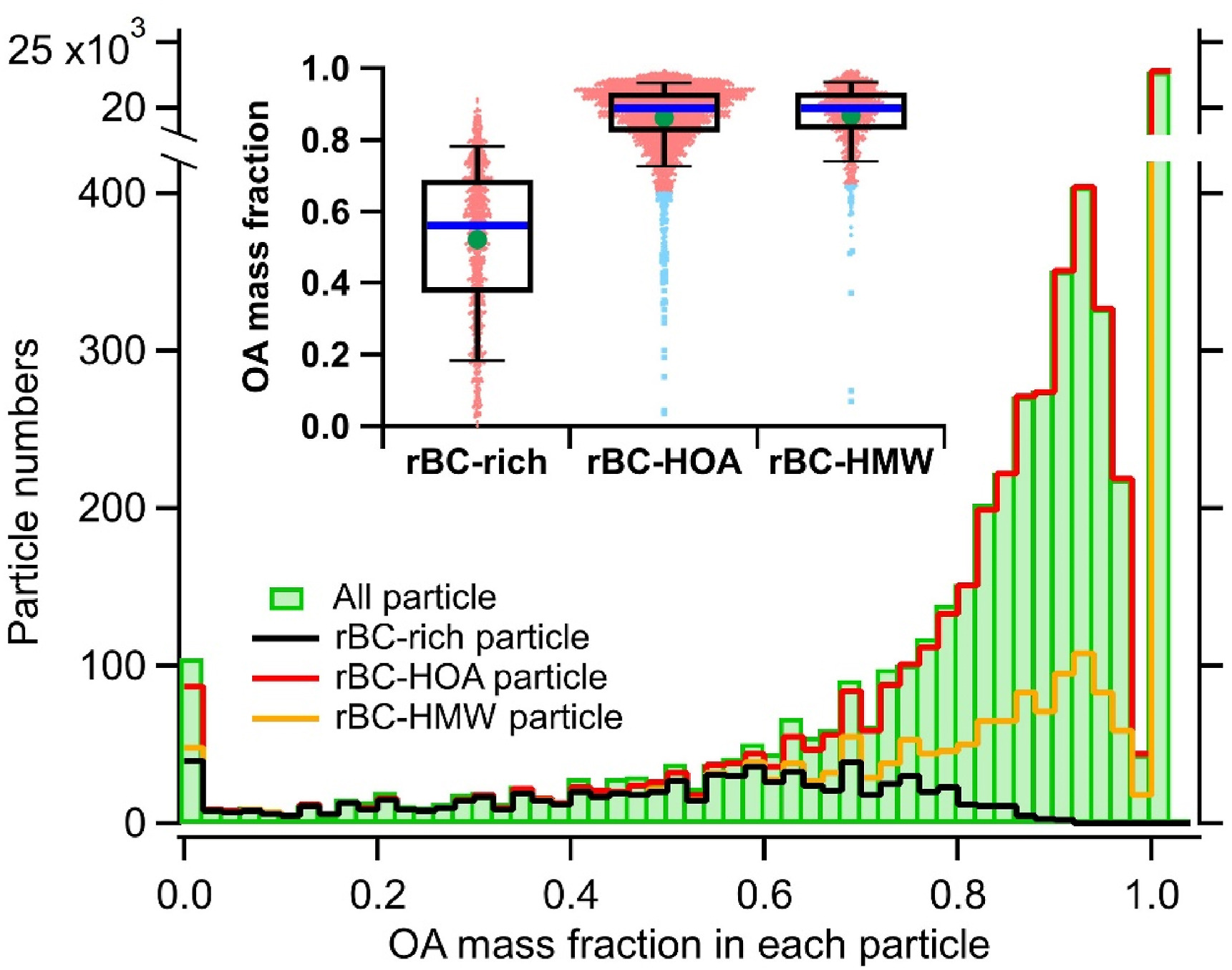Effects of polyoxymethylene dimethyl ether (PODEn) blended fuel on diesel engine emission: Insight from soot-particle aerosol mass spectrometry and aethalometer measurements
- PODE3 can reduce organic aerosol (OA) and black carbon (BC or soot) emissions.
- PODE3 can alter functionality of soot surface/nanostructure.
- PODE3 can reduce the fraction contribution of particle types that were composed of notably amounts of BC.
- PODE3 can enhance the absorption Ångström exponent (AAE) of thermally treated BC.
 Polyoxymethylene Dimethyl Ether (PODEn) is a promising diesel additive that can reduce particulate matter (PM) emission effectively, yet the changes in chemical and physical characteristics of PM emissions due to the application of PODEn-diesel blended fuel remain largely unexplored. This laboratory study investigates the effects of PODE3–diesel blended fuels (10, 20, and 30 vol% of PODE3 mixed with diesel, denoted as P10, P20, and P30, respectively) on diesel engine emissions at 30% and 60% engine loads. Black carbon (BC) and organic aerosol (OA) were characterized in real time by a combination of a soot-particle aerosol mass spectrometer (SP-AMS) and a seven-wavelength aethalometer. Our results show that PODE3 can significantly reduce both OA and BC emissions at both engine loads, with P20 producing the largest total PM mass reductions (>84%). The changes in the contribution of refractory oxygenated fragments to BC mass (i.e., C3O2+/C3+ and C3O+/C3+) indicate that PODE3 can reduce the functionality of soot surface/nanostructure. This is the first work showing that PODE3 can affect the mixing state of BC and OA in diesel engine exhaust. Increasing PODE3 blended volume can reduce the total fraction contribution of particle types that were composed of notably amounts of BC by mass. Furthermore, clustering analysis of single-particle data can identify two OA-dominated particle classes that were dominated by hydrocarbon fragments (CxHy+), and one of them had higher signal contribution from high molecular weight compounds. Lastly, the absorption Ångström exponent of BC (AAEBC) can be enhanced with PODE3 blended volume for both engine loads, and brown carbon (i.e., a light absorbing fraction of OA) can contribute up to ∼5% to the total aerosol absorption at the wavelength of 370 nm. Overall, this work provides insights into the potential impacts of PODEn blended fuel application on the chemical and optical properties of BC and OA emitted from diesel engine combustion.
Polyoxymethylene Dimethyl Ether (PODEn) is a promising diesel additive that can reduce particulate matter (PM) emission effectively, yet the changes in chemical and physical characteristics of PM emissions due to the application of PODEn-diesel blended fuel remain largely unexplored. This laboratory study investigates the effects of PODE3–diesel blended fuels (10, 20, and 30 vol% of PODE3 mixed with diesel, denoted as P10, P20, and P30, respectively) on diesel engine emissions at 30% and 60% engine loads. Black carbon (BC) and organic aerosol (OA) were characterized in real time by a combination of a soot-particle aerosol mass spectrometer (SP-AMS) and a seven-wavelength aethalometer. Our results show that PODE3 can significantly reduce both OA and BC emissions at both engine loads, with P20 producing the largest total PM mass reductions (>84%). The changes in the contribution of refractory oxygenated fragments to BC mass (i.e., C3O2+/C3+ and C3O+/C3+) indicate that PODE3 can reduce the functionality of soot surface/nanostructure. This is the first work showing that PODE3 can affect the mixing state of BC and OA in diesel engine exhaust. Increasing PODE3 blended volume can reduce the total fraction contribution of particle types that were composed of notably amounts of BC by mass. Furthermore, clustering analysis of single-particle data can identify two OA-dominated particle classes that were dominated by hydrocarbon fragments (CxHy+), and one of them had higher signal contribution from high molecular weight compounds. Lastly, the absorption Ångström exponent of BC (AAEBC) can be enhanced with PODE3 blended volume for both engine loads, and brown carbon (i.e., a light absorbing fraction of OA) can contribute up to ∼5% to the total aerosol absorption at the wavelength of 370 nm. Overall, this work provides insights into the potential impacts of PODEn blended fuel application on the chemical and optical properties of BC and OA emitted from diesel engine combustion.
- Access the article at the publisher: DOI: 10.1016/j.aeaoa.2023.100216



